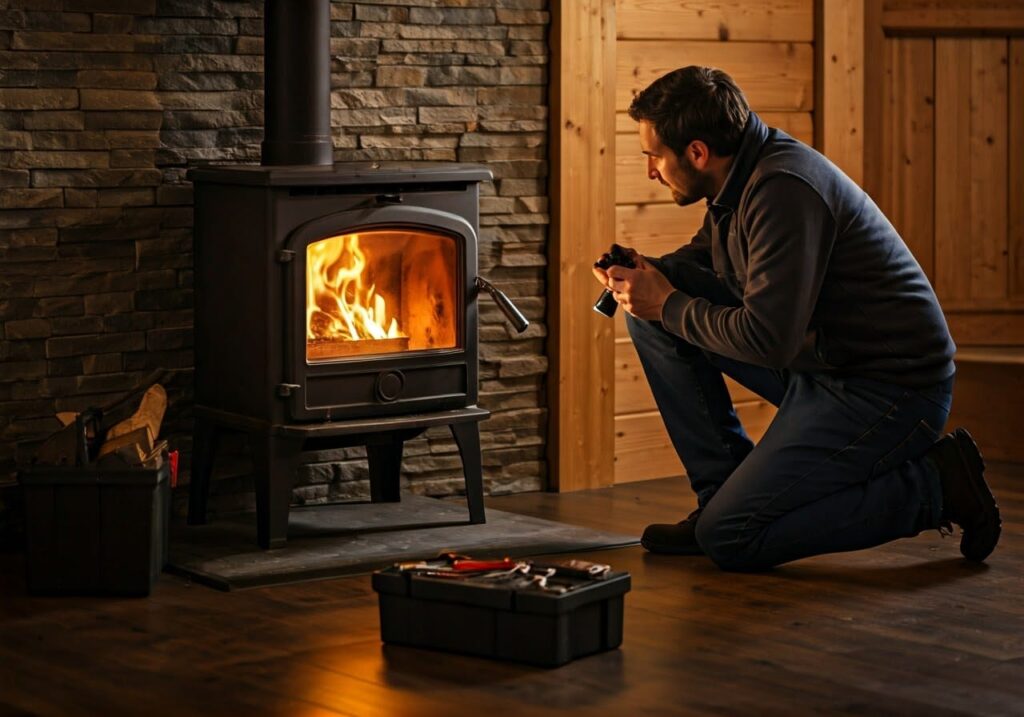
Identifying and Eliminating Unpleasant Odors for a Healthier Home
Can you detect wood stove smells, permeating your home with unpleasant odors and leaving you wondering what’s gone wrong? A wood stove producing a bad smell can be a source of frustration, concern for indoor air quality, and even a sign of potential safety issues. In this comprehensive guide, we’ll explore the common causes of bad smells from wood stoves and provide actionable solutions to eliminate the odors and ensure a healthier, more comfortable living space.
Wood stoves are a cozy and efficient way to heat homes, but sometimes, they can produce unpleasant odors that permeate the entire house. Recognizing the type of smell is crucial for diagnosing and resolving the problem. Here are the primary types of bad smells associated with wood stoves, along with insights into their causes:
Understanding Wood Stove Smells: Identifying and Addressing Common Issues
- Burning or Smoky Odors: Often indicative of incomplete combustion, these smells can arise from poor airflow, damp wood, or a clogged chimney. Regular chimney cleaning and ensuring proper wood seasoning can mitigate this issue.
- Creosote or Tar-like Smells: These pungent aromas usually signify a buildup of creosote in the chimney or flue, commonly due to burning unseasoned wood or inadequate stove maintenance. Annual inspections and thorough creosote removal are essential.
- Musty or Mildewy Aromas: Typically stemming from moisture accumulation, these smells can be traced back to a blocked or damaged chimney cap, poor ventilation, or storing wood improperly. Ensuring dry wood storage and checking chimney integrity can resolve the issue.
- Gas-like or Chemical Odors: These are often a sign of a more serious problem, such as a leak in the stove’s gasket seals or inadequate ventilation leading to the accumulation of harmful fumes. Immediate professional inspection is recommended to ensure safety.
The Science Behind Wood Stove Odors:
- Incomplete Combustion: Leads to the production of particulate matter, carbon monoxide, and volatile organic compounds (VOCs), causing unpleasant odors.
- Moisture and Humidity: Contributes to the growth of mold and mildew, resulting in musty smells.
- Creosote Buildup: A natural byproduct of burning wood, but excessive buildup can cause strong, unpleasant odors.
Common Causes of Bad Smells from Wood Stoves
1. Improperly Seasoned or Green Wood
- Cause: Burning wood with high moisture content.
- Solution:
- Use a wood moisture meter to ensure wood is properly seasoned (below 20% moisture).
- Season wood for at least 6 months to reduce moisture content.
2. Inadequate Ventilation or Draft
- Cause: Insufficient airflow leading to incomplete combustion.
- Solution:
- Ensure proper chimney installation and height.
- Check for blockages in the chimney or vents.
- Adjust airflow to achieve optimal burn conditions.
3. Creosote Buildup
- Cause: Infrequent cleaning and maintenance.
- Solution:
- Clean the chimney and stove regularly to prevent creosote accumulation.
- Use a creosote-removing product as needed.
4. Moisture Issues
- Cause: High humidity or water infiltration.
- Solution:
- Ensure proper stove installation to prevent water entry.
- Use a dehumidifier in the surrounding area to reduce humidity.
- Inspect and repair any water damage or leaks.
5. Stove Maintenance Neglect
- Cause: Failure to perform regular maintenance tasks.
- Solution:
- Follow a regular maintenance schedule for your wood stove.
- Inspect and replace worn-out parts to prevent issues.
Step-by-Step Troubleshooting Guide
Here are some top tips to troubleshoot Bad Smells:
| Step | Action | Expected Outcome |
|---|---|---|
| 1 | Inspect the wood for proper seasoning. | Determine if wood moisture is the primary issue. |
| 2 | Check ventilation and draft for adequacy. | Verify if airflow is sufficient for complete combustion. |
| 3 | Clean the chimney and stove to remove creosote. | Reduce or eliminate creosote-related odors. |
| 4 | Assess the surrounding area for moisture issues. | Identify and address any humidity or water-related problems. |
| 5 | Perform thorough maintenance on the stove. | Ensure all parts are in good condition to prevent future issues. |
Expert Insight
“A bad smell from your wood stove is often a symptom of a larger issue. By identifying and addressing the root cause, you can not only eliminate the odor but also ensure your stove operates safely and efficiently, providing a healthier environment for you and your family.”
— Sarah Taylor, Indoor Air Quality Specialist
Preventative Measures for a Smell-Free Wood Stove Experience
- Regularly Inspect and Maintain Your Stove
- Use Properly Seasoned Wood
- Ensure Adequate Ventilation
- Monitor Surrounding Humidity Levels
- Schedule Annual Professional Inspections
Conclusion
A wood stove producing a bad smell can be a significant concern for homeowners. However, by understanding the common causes and following the step-by-step troubleshooting guide provided in this article, you can identify and eliminate the source of the odor, ensuring a safer, more comfortable, and healthier living space.


